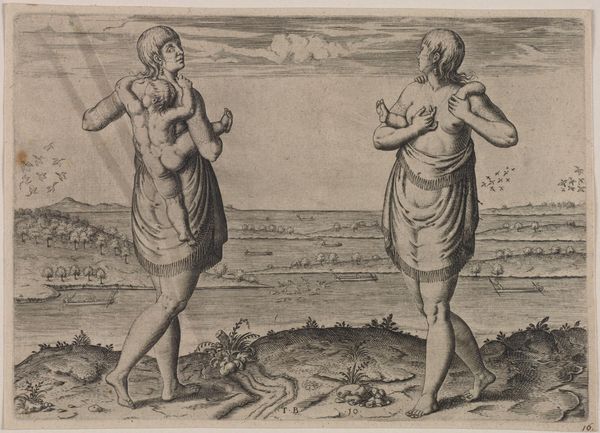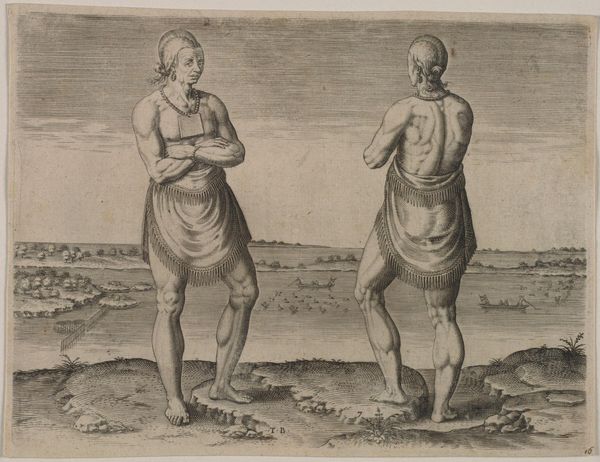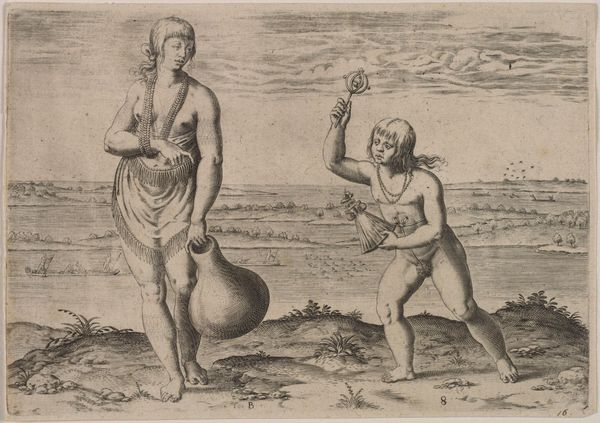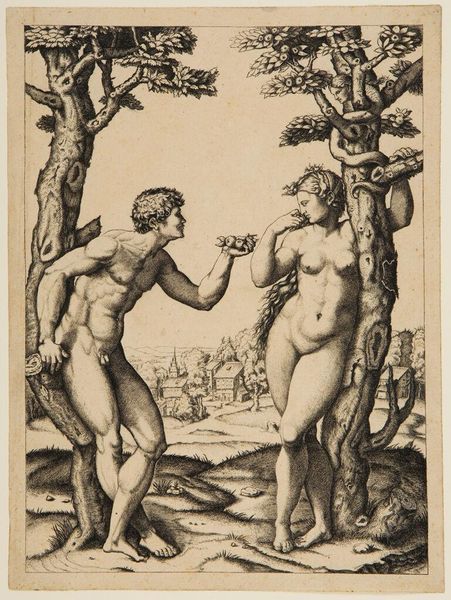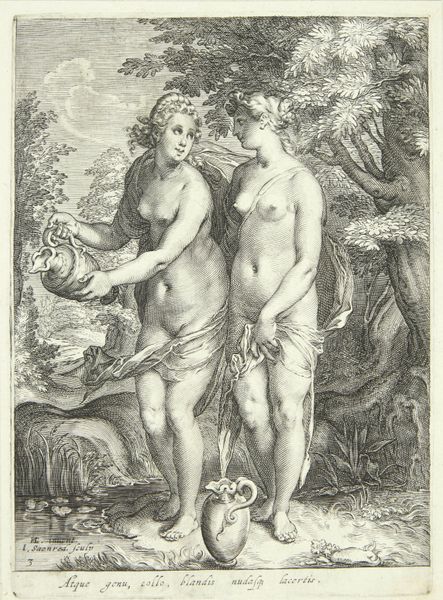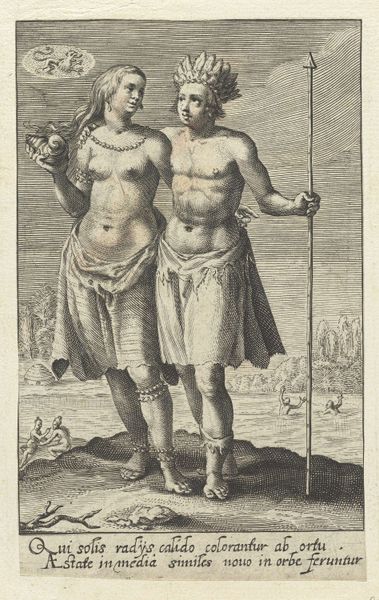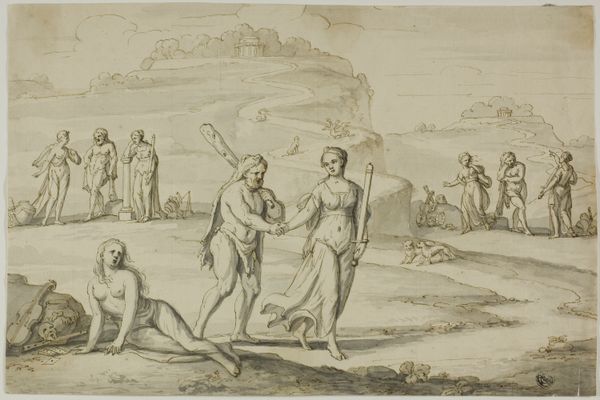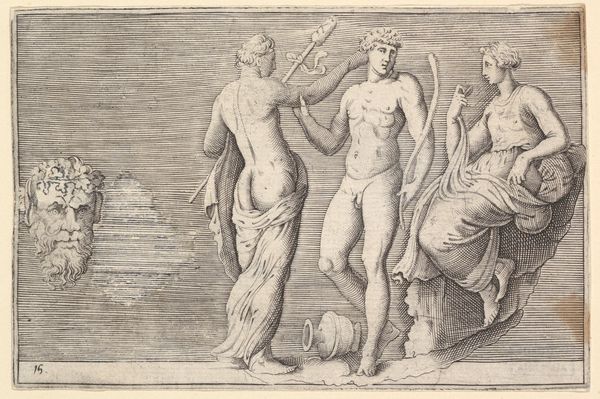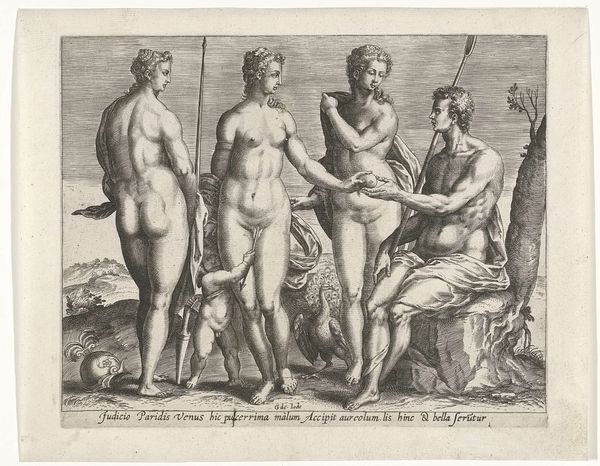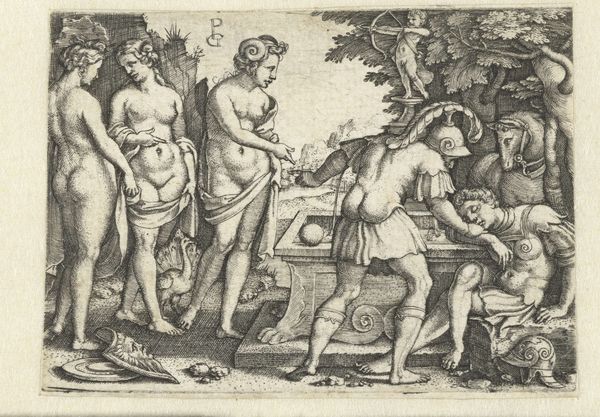
Copyright: CC0 1.0
Curator: Here we have Theodor de Bry’s engraving, "One of the Chief Ladies of Secota." Editor: It’s striking how these figures are presented—almost like statues, posed against a busy backdrop of daily life. Curator: De Bry never visited the Americas. This image is based on watercolors by John White, and it’s crucial to remember it was made to encourage European colonization. Editor: Exactly. The "chief lady" is both exoticized and rendered passive, a symbol of the land to be claimed, erasing Indigenous agency. The tattoos, the adornments—they’re presented as curiosities. Curator: The contrast between the detailed figures and the idyllic background serves to emphasize a sense of order and control. This image functioned as propaganda, designed to justify colonial expansion. Editor: It’s a stark reminder of how images can be tools of power, shaping perceptions and fueling harmful ideologies that perpetuate colonial narratives. Curator: Indeed, it urges us to critically examine the narratives we inherit. Editor: Absolutely. We must question these images and their impact on our understanding of history.
Comments
No comments
Be the first to comment and join the conversation on the ultimate creative platform.
